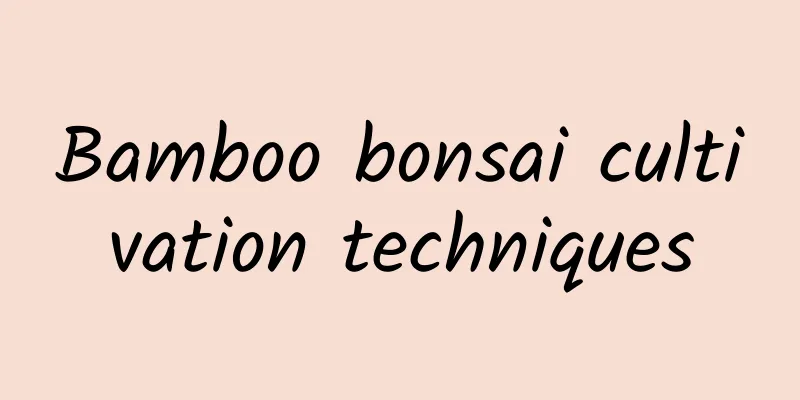How to change the soil and pots of potted plants

Time to repot potted plantsPotted plants can be repotted all year round, but the best time to do so is in spring, because the climate is warm at this time, everything is revived, and potted plants can adapt quickly after being repotted. Changing the soil and potting of potted plantsThe reason why potted plants need to have their soil and pots changed during planting is because the nutrients in the soil in the pot are consumed at a high level and the soil needs to be changed. On the other hand, as the plants grow bigger, they need to be potted in a larger size to facilitate the growth of the plant's roots. When changing the soil and pots for potted plants, it is best to place them in a warm, semi-shaded, ventilated environment. Do not apply fertilizer after repotting, as this will damage the root system. Fertilizing can only be resumed after the plants have adapted to the pot. How to change the soil and pots of potted plants1. Remove the pot Before changing the soil and pots of potted plants, you can water them one day in advance to loosen the soil. Then take the entire root system out of the pot and cut off some old and yellow leaves. This can reduce the consumption of nutrients and water and help the plants grow better. 2. Prepare the soil It is best to use fertile nutrient soil or peat soil to plant potted plants. You can also use your own soil, but you must ensure good water permeability. 3. Planting When planting, you need to remove some of the original soil on the roots, trim the roots, cut off some dead and diseased roots, and unhealthy roots, soak them in wood ash water, and then plant them directly in the prepared potting soil after drying, and compact the soil. Maintenance of potted plants after changing soil1. Watering After changing the soil of potted plants, you should water them sufficiently to keep the soil slightly moist, but be sure not to water them too frequently, otherwise the roots will easily rot. You can spray water on the leaves to create a growing environment with high air humidity. 2. Fertilization Do not fertilize potted plants immediately after changing the soil. Wait until new leaves grow before applying fertilizer. If you fertilize immediately, fertilizer damage will occur and affect acclimatization. 3. Pruning After changing the soil for potted plants, the main branches should be retained, and the old and dry branches should be cut off, and those with weak growth should also be pruned. Plants with rotten and dead roots should be pruned and disinfected. 4. Lighting After changing the soil, potted plants can be kept in a place with sufficient light. Even if the light is insufficient, potted plants can maintain good growth. However, when cultivating, you need to pay attention to the fact that direct sunlight has a great impact on potted plants, so you must take shade measures. |
<<: Methods and precautions for propagation of tuberose by cuttings
>>: Can cotton be grown in pots?
Recommend
How long should I water Dendrobium candidum?
1. Spring Spring happens to be the season of reco...
When is the best time to plant snow peas?
Snow peas are a kind of vegetable that is eaten a...
What is the best growing environment and planting season for raspberries?
What months are suitable for planting raspberries...
Can peach pits be planted? Will peach pits be planted into peach trees?
To plant potted peaches with peach pits, you need...
How to grow gardenia in pots
1. Choose potting soil When growing it in a potte...
Lavender planting conditions and planting environment requirements
Lavender Introduction Lavender has many nicknames...
How often should sunflowers be watered?
How often should you water your sunflowers? Sunfl...
Do hydrangeas like sunlight? Do they need sunlight?
Introduction to Hydrangea There are many common v...
Can animal organs be used as fertilizer?
Animal offal as fertilizer Animal offal can be us...
How to repot lotus
Repotting method Most families grow water lilies ...
What flowers are suitable for growing in Shiyan? What are the city flowers and trees?
1. Climate characteristics of Shiyan Shiyan has a...
What soil is best for growing violets?
Violets have certain requirements for soil. The s...
How to grow succulents for beginners
1. Choose potting soil When planting succulents, ...
Tulip planting time and method
Tulips , as a world-famous bulbous flower, are no...
When is the best time to transplant honeysuckle (which month has the highest survival rate for honeysuckle)
When is the best time to plant honeysuckle? Honey...









